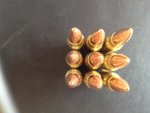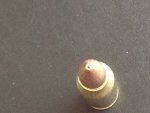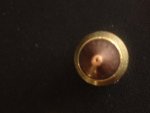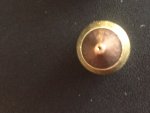Hi everyone. I purchased a Savage FCP-K 10 (.308) with a Vortex Viper PST 4-16x50 scope to shoot outdoors from 250-700 yrds. I really like the rifle and scope- NO issues with either of these. I also purchased some Federal Premium .308 175 gr Sierra Matchking BTHP gold medal match ammo, mainly because this is the only ammo they had and I could find for this rifle. I'm no expert on ammo so I value your opinions.
I was shooting at the range with a couple buddies and my one buddy noticed the ammo tips were all irregular (uneven and offset holes in the point) As we started looking closer at all the ammo, they were all like this. The sad thing is that one of my buddies was shooting an AK with Wolf 7.62 hollow point ammo (yes Wolf) and the tips were actually perfect!- waaaaay nicer than the federal premium ammo. How can this be?
I contacted federal about the situation, sent them pictures (pictures from my iPhone, they aren't perfect pictures, but you can see the irregularities) and below is the response I got from them - which doesn't make sense to me...I never mentioned anything about hunting.....what do you think??
From Federal...."Thank you for submitting these pictures. This is a Boat Tail Hollow Point designed for superior accuracy, not designed as a hunting load. Irregularities in the hollow point will not affect accuracy at all. If you have further questions please contact Sierra."
What are your thoughts?
I was shooting at the range with a couple buddies and my one buddy noticed the ammo tips were all irregular (uneven and offset holes in the point) As we started looking closer at all the ammo, they were all like this. The sad thing is that one of my buddies was shooting an AK with Wolf 7.62 hollow point ammo (yes Wolf) and the tips were actually perfect!- waaaaay nicer than the federal premium ammo. How can this be?
I contacted federal about the situation, sent them pictures (pictures from my iPhone, they aren't perfect pictures, but you can see the irregularities) and below is the response I got from them - which doesn't make sense to me...I never mentioned anything about hunting.....what do you think??
From Federal...."Thank you for submitting these pictures. This is a Boat Tail Hollow Point designed for superior accuracy, not designed as a hunting load. Irregularities in the hollow point will not affect accuracy at all. If you have further questions please contact Sierra."
What are your thoughts?





